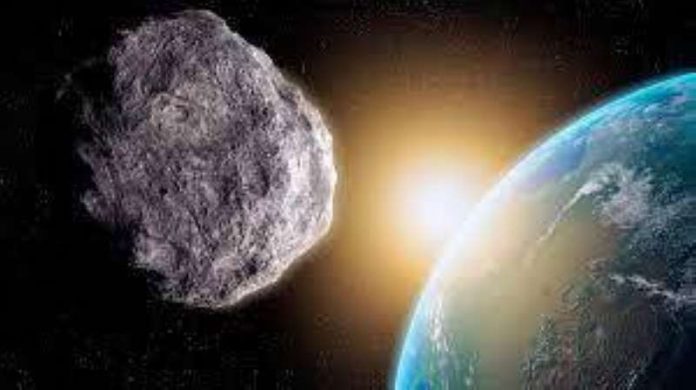Astronomers have finally discovered an asteroid the size of an Olympic swimming pool that could collide with Earth in 2046 on Valentine’s Day, but the very low odds of collision have diminished even more.
This orb, dubbed 2023 DW, was spotted with a diameter of 50 meters for the first time on February 26 by a small observatory in Chile. The space agencies — NASA of the US and the European (ESA) — classified it at the top of the list of potentially dangerous objects, as its theoretical path passes near Earth at a distance close enough to pose a danger, reports Al-Rai daily.
In the event that this happens, the calculations predict the date of the possible collision on February 14, 2046, Valentine’s Day. This news topped the headlines of some newspapers, which advised the lovers to cancel their plans on this date.
At the end of February, the probability of an asteroid hitting Earth was one in 847 but on Sunday the probability increased to one in 432, according to the European Space Agency’s risk list. NASA estimates also point in the same direction.
But the head of the European Space Agency’s Planetary Defense Office, Richard Moesel, told AFP the probability dropped overnight to one in 1,584.
He added that the probability will decrease “with each monitoring until it reaches zero within a few days at the latest.”
But what if the asteroid “DW 2023” collided with us, after all experts point out that the extent of the damage will depend on the composition of this orb.
If it was a pile of debris, the scenario might resemble the “Tunguska event” in Siberia in 1908, a large explosion attributed to the fall of an asteroid, said David Farnocchia, a scientist at NASA’s Jet Propulsion Laboratory.
The celestial body, similar to DW 2023, exploded in the atmosphere over a sparsely populated region, flattening trees over an area of nearly 2,000 square kilometers.
The asteroid may also be a “solid piece of iron”, such as the one that created the massive Barringer crater in the US state of Arizona 50,000 years ago, according to Richard Moisel.
In both cases, due to its size, the asteroid “2023 DW” will only cause “local damage”, without a significant impact on the rest of the planet, as the expert confirms.























